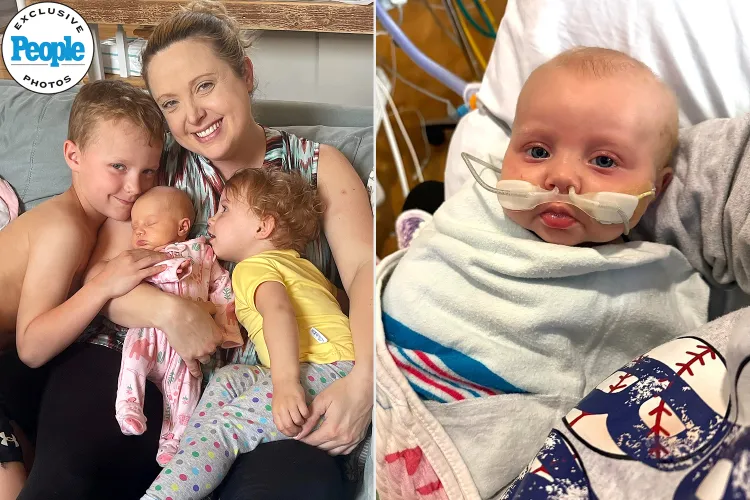Mom Learns Her Daughter Is One of Only Six Ever Born With a Rare Genetic Disease — and the Other Five Didn’t Survive
From the moment new mother Amanda LaValle held her daughter Iris after birth in Pennsylvania, the future appeared hopeful. Amanda, a speech and language pathologist, knew the early signs of feeding difficulties—yet she never anticipated that within months Iris would be diagnosed with a disease so rare it defies a formal name, one that places her among just six known children in the world. The five others registered with this genetic mutation tragically passed away within infancy, leaving Amanda and her husband grappling with fear, love and uncertainty as they step into each day.
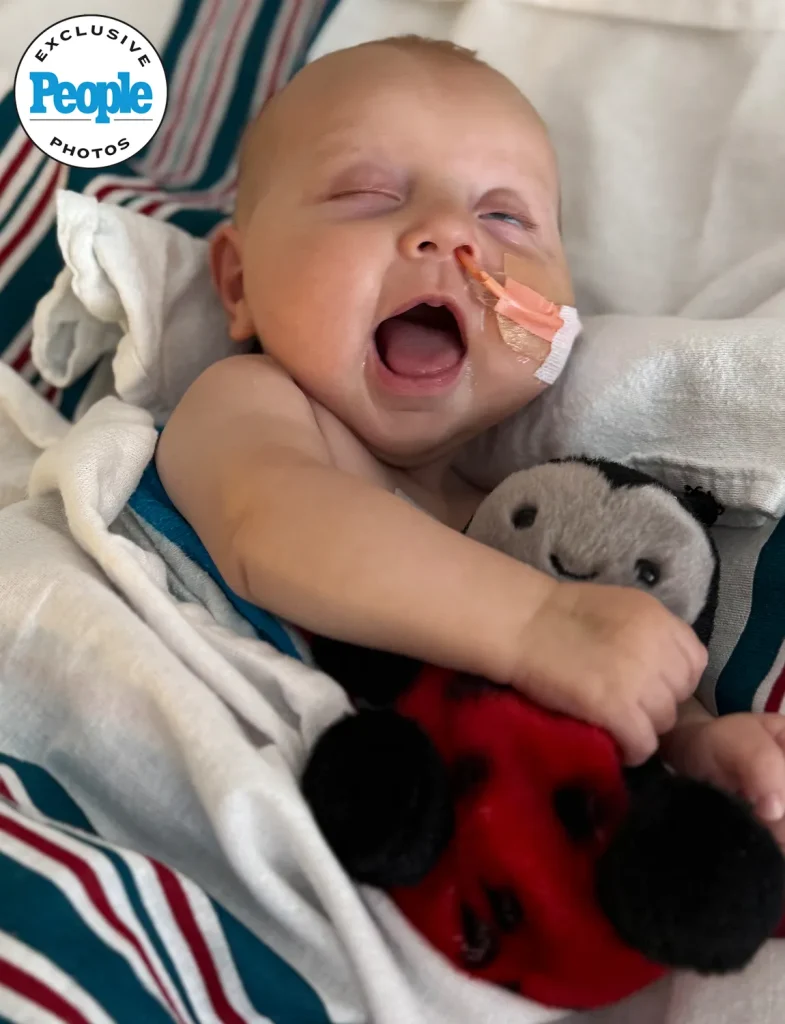
Pregnancy had seemed to follow the familiar path for Amanda: routine ultrasounds, a scheduled caesarean section, and a strong expectation that Iris would join the family of three—older brother Owen and sister Eliana—just as smoothly as the siblings before her. Yet from her earliest hours, something felt different. Born at around 37-38 weeks, Iris required intubation and immediate transfer to the neonatal intensive care unit (NICU) at another hospital. Amanda remembers the strain of being separated from her newborn while the ambulance sped Iris away.
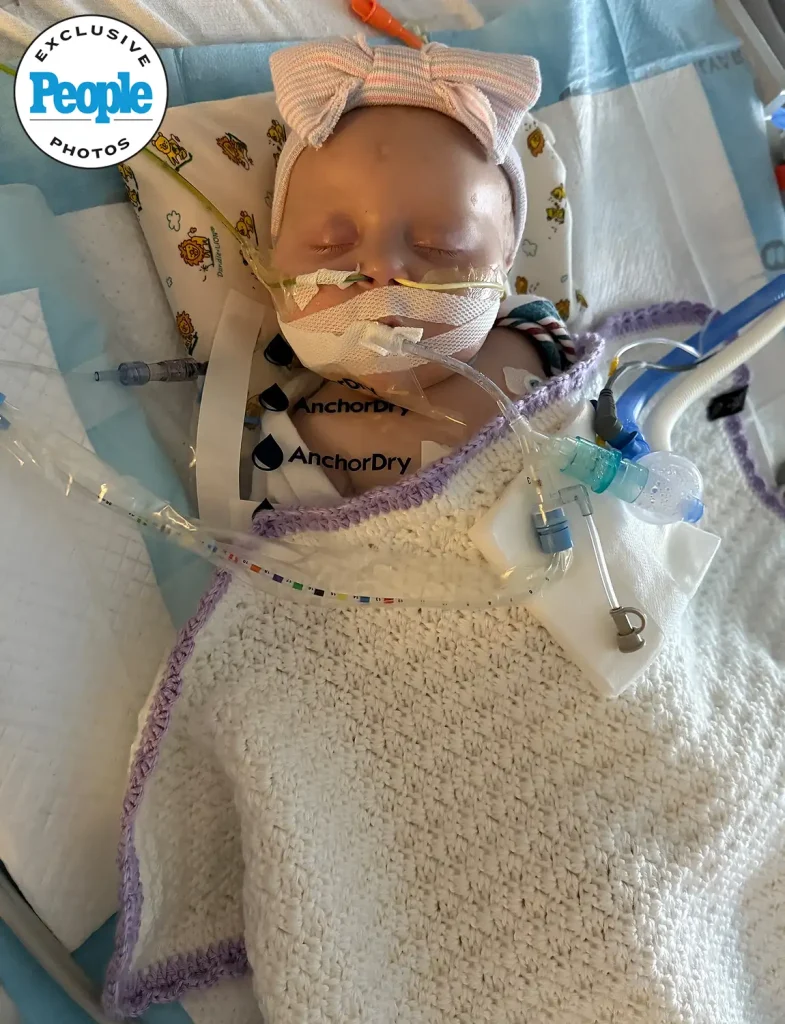
The first week of life brought vulnerability, but medical staff were hopeful—until the feeding troubles began. Amanda’s professional background made her attuned to signs of aspiration, slow eating and “failure to thrive,” but even with that expertise she was alarmed at how small changes snowballed into weeks of hospital stays. The diagnosis arrived after genetic testing and revealed what doctors now describe as an ultra-rare mitochondrial gene mutation, plus a hidden condition called malignant hyperthermia, inherited from Amanda and placing Iris at additional risk.

Amanda’s candid reflection reveals the weight of that discovery: “Needless to say, that’s quite terrifying to know that your child has something that’s so rare and everyone else has died by 11 months old.” She was referring to the fact that in the handful of other known cases of the mutation, the children did not survive infancy. That reality hangs over the family’s days, even as they cling to hope and fight for every milestone.

Hospital stays became a rhythm of dread and determination. In August, Iris developed a cold that rapidly escalated into swallowing trouble. A modified barium swallow study revealed she was aspirating—on both thick and thin liquids—and could no longer eat orally. A nasogastric (NG) feeding tube followed. Within weeks, Amanda found herself performing CPR on her one-year-old daughter when her lips turned blue during a feeding. “Sleep is very hard to come by, let’s just put it that way,” Amanda said.

In between hospital shifts, Amanda and her husband managed life at home with Owen and Eliana. They adopted a system where one parent spends days at the hospital while the other stays home, trading off to preserve some semblance of normalcy for their older children. Amanda admits that “the bills don’t stop coming,” and that while she anticipates discharge is coming, she also knows it won’t mark the end of hospital visits. At any hint of fever, Iris must return for at least 48 hours.
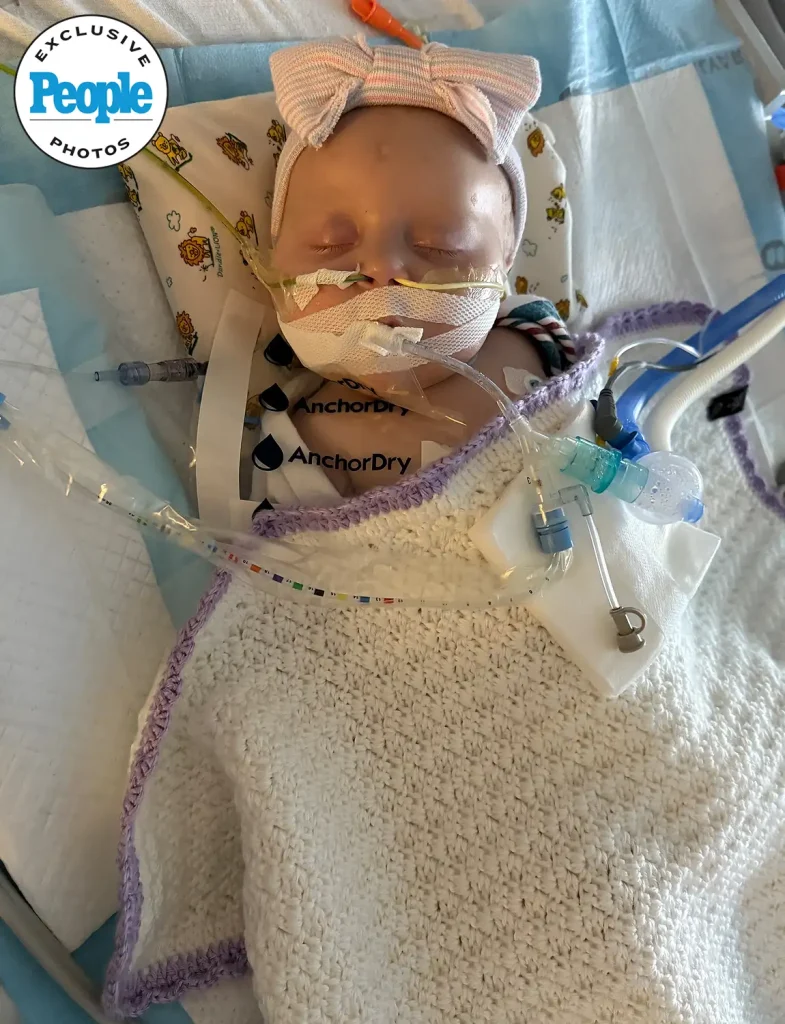
Despite these pressures, Iris continues to surprise her medical team. At six months old, she has met or exceeded many early milestones—rolling over both ways, smiling, babbling, making eye contact, reaching for objects. Amanda, familiar with children who have special-needs, remains grounded yet optimistic: “I’m not going to give up hope on her, and I’m going to make sure that we’re working on all of the things so that she can achieve to the best of her ability.”
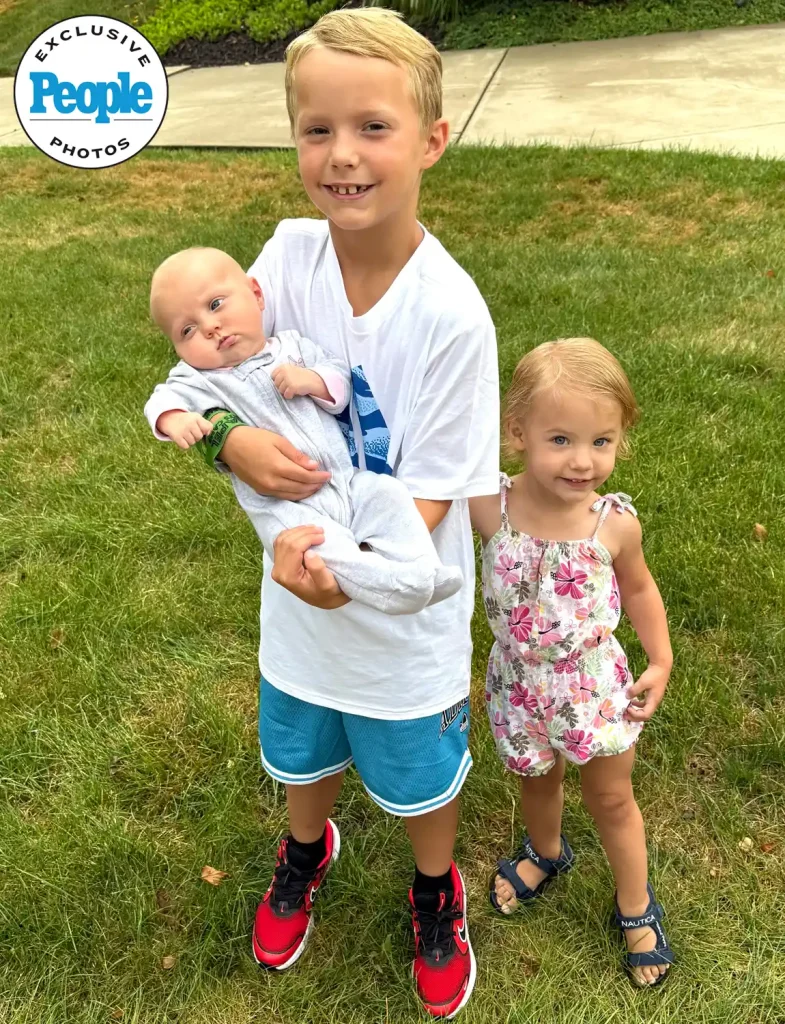
Through the heartache and uncertainty, the story touches deeply on what it means to parent differently. In a world where genetic medicine is advancing fast but ultra-rare disorders remain a frontier, Amanda’s insistence on pushing for genetic testing may have made a crucial difference. She viewed her daughter’s feeding issues not as isolated incidents but as signs demanding exploration. That dedication framed the diagnosis and opened the door to preventative measures and coping strategies.
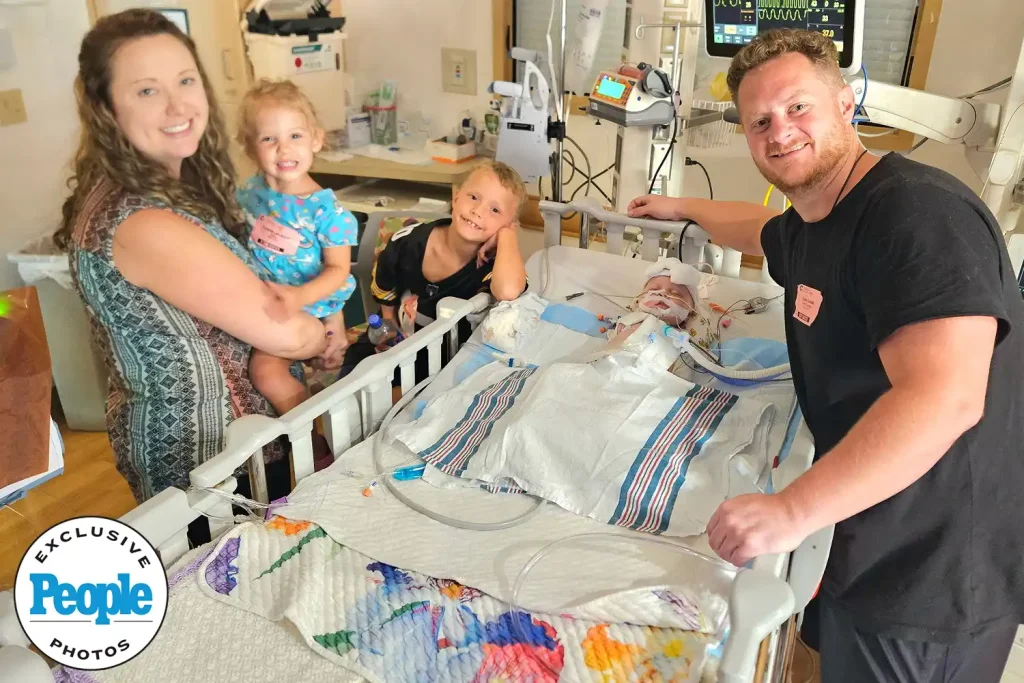
The broader implications are profound. When a child is among only six known worldwide with a particular genetic condition, there are no established treatment roadmaps, no clear prognoses and little precedent. Medical teams can draw on mitochondrial disease models, but every child is unique, especially when the mutation is unnamed and no life history extends beyond infancy. The fact that Amanda and her family are writing those chapters in real time raises both urgency and humility.
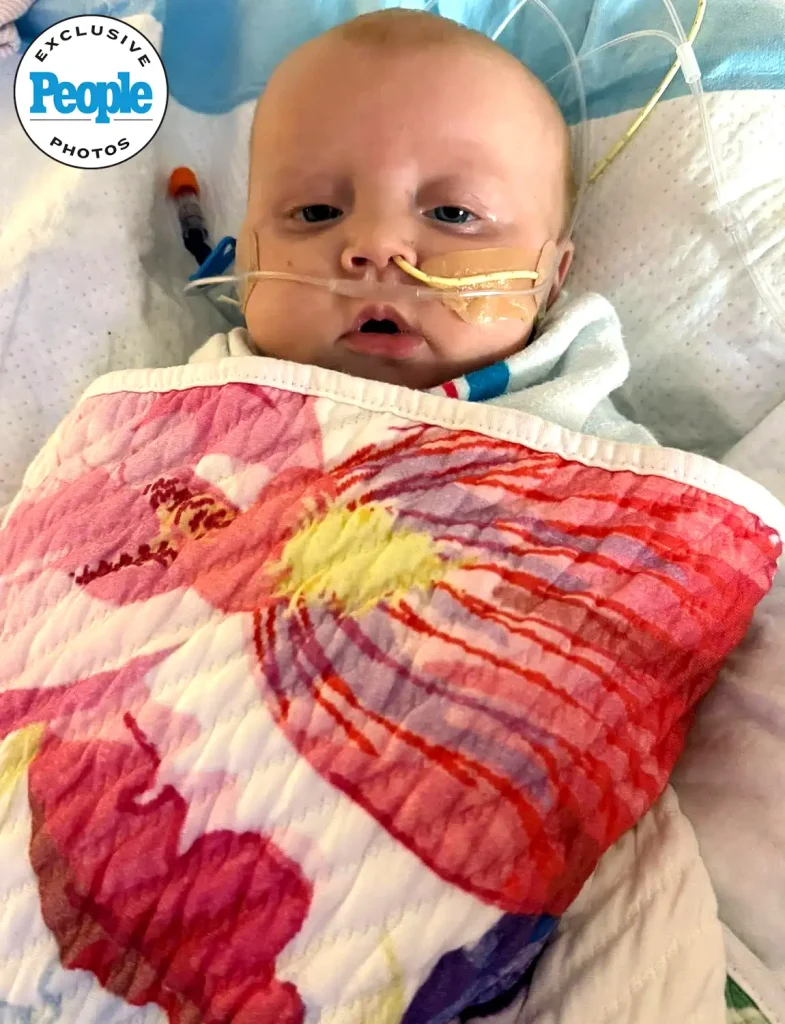
Amanda’s story also reflects the everyday realities of families navigating rare disease: the travel between hospitals and home, juggling siblings, sleep deprivation, financial strain, and the emotional toll of waiting for updates that might reshape the next week or the next year. Her voice is candid about the fear she carries—and the hope she refuses to surrender. She is trying to give Iris every opportunity she can. “Whatever this is, I’m going to make sure that it’s not for lack of us trying and not giving her every opportunity,” she said.
But there is also something deeply human and beautiful unfolding here. A mother’s resolve, a child’s tiny achievements, a family’s bond strengthened under pressure. In the midst of hospital corridors and diagnostic uncertainty, there is play, smiles, baby coos, the quiet of siblings who still need their parents, and a mother who remains both caregiver and advocate. Those pieces matter just as much as the medical charts.

In writing about this, it’s important to reflect on the nuance: this isn’t a story of defeat, nor of miracle beyond measure. It is the story of a family living in the shadow of unknowns, demanding knowledge, refusing passivity, and embracing love as their daily practice. Amanda is terrified—and that fear is real, given what the data indicates—but she is also hopeful, intentional, and present. And that duality is exactly what makes this story resonate beyond the particulars of diagnosis.
For the medical community and for families facing similarly rare conditions, Amanda’s narrative amplifies the need for early genetic testing, interdisciplinary care, psychosocial support, and hospital-to-home coordination. It also throws into sharper relief the vast disparity between well-documented disorders with treatment protocols and ultra-rare mutations that exist in the margins of medicine. When the survival record is five out of five lost, the stakes are enormous—and yet, the possibility of being first to chart a different outcome also exists.
As the LaValle family continues forward, there will inevitably be moments of joy and of struggle, of small triumphs and of waiting that feels endless. But through it all Amanda is signaling something quietly revolutionary: that even when the world has recorded only heartbreak with this mutation, she refuses to accept that as the only script. She is poised for unknowns—with courage, with love, and with the fierce conviction that Iris deserves every chance.
In the end, this story reminds us that at the heart of rare-disease reporting are not just statistics and labs but human lives unfolding in real time. This is about a daughter named Iris, a mother named Amanda, a family of five numbering into the future, and the hope that one day the curve of this disorder will bend differently. The fact that this diagnosis touches only half a dozen children worldwide does not diminish its significance—it magnifies the urgency and the humanity of what it means to fight for one life with all you have.
